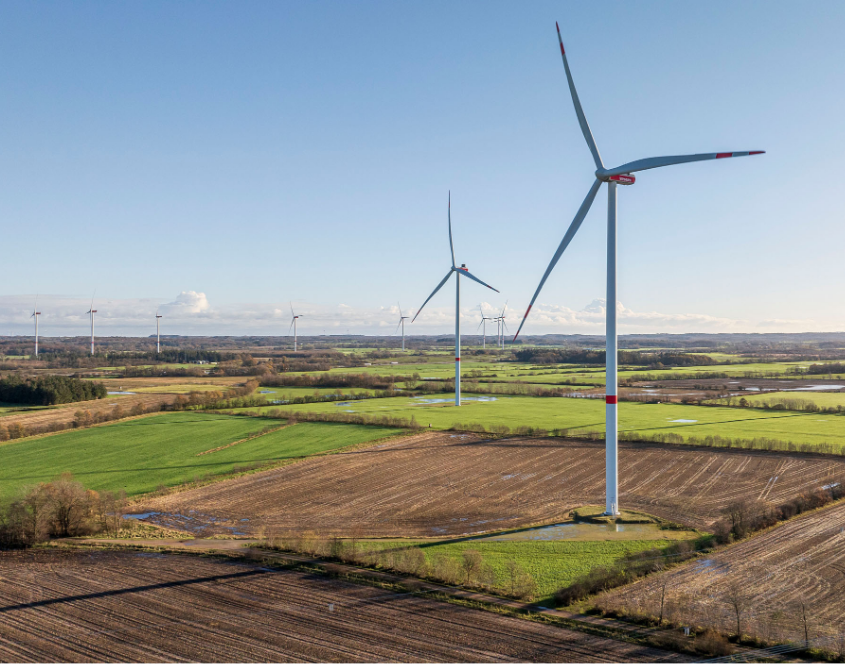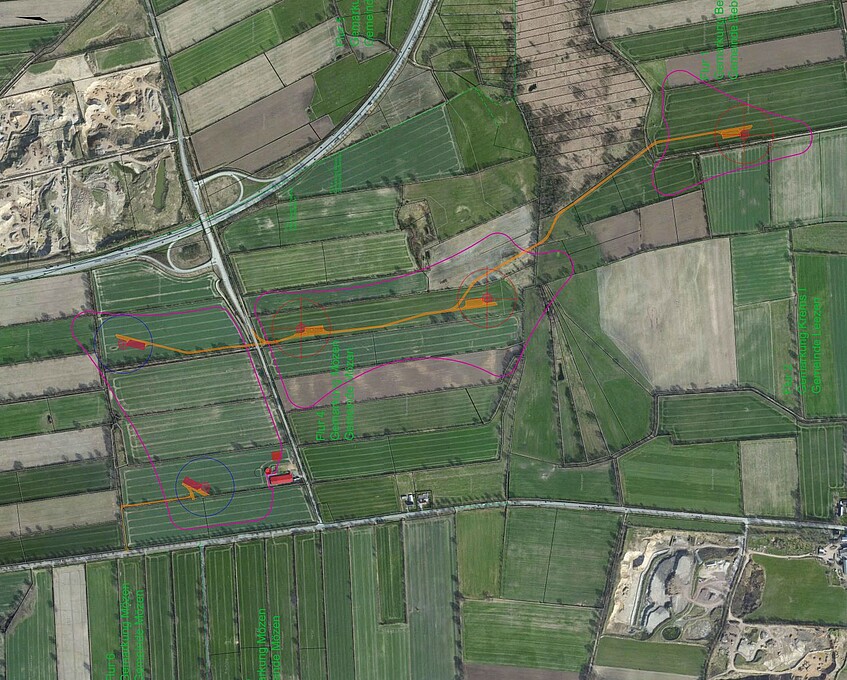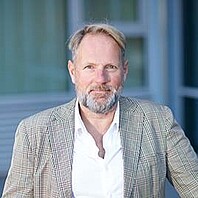The photo above shows the Langstedt wind farm in Schleswig-Holstein, which is currently in operation.
WKN GmbH is planning the construction and operation of five wind power turbines on agricultural land in the municipalities of Mözen and Bebensee in Schleswig-Holstein. The wind farm will be connected to the company's own Högersdorf transformer station, which is located approx. 2.5 kilometres west of the municipality of Högersdorf as the crow flies.
With the Bebensee wind farm, we have the opportunity to make our contribution to the energy transition and thus harmonise ecology and economy. We are supplying safe and clean energy and investing in Germany as a business location.
The following specifications are subject to change and may change as the project progresses:
- Quantity: 5
- Type: Siemens Gamesa SG6.6-170
- Rotor diameter: 170 m
- Hub height: 115 m
- Total height: 200 m
- Nominal output per WT: 6.6 MW
- Total rated power: 33 MW
This results in the following calculated values:
- Electricity production per year: approx. 75,000 MWh
- 3-person households supplied: approx. 20,200 (1)
- CO2 savings per year: approx. 56,400 tonnes (2)
(1) Source: Bundesverband Windenergie (BWE)
(2) Source: Bundesverband der Energie- und Wasserwirtschaft
Environmental and nature conservation measures play an important role in the approval of our projects: we take sensitive habitats, such as bird migration routes, into account as early as the site selection stage. In addition, necessary protective measures for endangered animal and plant species as well as ecological compensation measures are implemented. Interventions in nature and the landscape are thus fully compensated for in our projects.
Protective measures for endangered animal and plant species:
By cultivating areas of clover grass and flowering strips away from the wind farm, several deflection areas for the red kite are created in a targeted manner. By redirecting the focus of the red kite's hunting activities to areas away from the wind turbines, the risk of collision is significantly reduced.
Ecological compensation measures:
Biotope value points were acquired in the same natural area and compensation payments were made for the landscape as a compensatory measure.
The removal of a total of 109 metres of curtilage required for the project is compensated for both by the creation of a total of 218 metres of new curtilage and by filling gaps in the curtilage.
Measures to reduce immission:
It goes without saying that the maximum permissible guide values for noise and cast shadows will be adhered to.In order to reduce night-time light immissions, an on-demand night-time marking/identification (ONI) system is installed. The system is equipped with ice detection systems to prevent the formation of ice. If icing is detected, the system is stopped and the rotor is brought to a standstill.
It is important to us to realise our wind farm projects together with local people.
We involve citizens through various individualised concepts. For example, we try to involve local companies – whether for construction or mowing work – in order to generate added value in the local region.
We very much welcome the fact that Section 6 of the German Renewable Energy Sources Act (EEG) 2023 has created the opportunity for local authorities within a 2.5-kilometre radius of the centre of a wind turbine to participate financially in its operation. It is therefore part of our self-image to offer a voluntary amount of 0.2 cents per kilowatt hour generated to a total of eleven affected municipalities.
For modern wind turbines, this results in an annual payment of around 30,000 to 40,000 euros per turbine. The prerequisite for municipal participation under the EEG 2023 is the fulfilment of the legal requirements in the respective project.
In addition, the participating landowners have founded a development association to support local charitable projects.
The planning law basis for the planned wind farm is Section 35 of the German Building Code (BauGB) for privileged construction in outdoor areas. The planned project is located within the priority area "Wind energy PR3_SEG_040" of the partial update of the 2010 State Development Plan (LEP) Chapter 3.5.2 in planning area III (South), which has been legally binding since December 2020.
Approval was received in March 2023, after which construction work began in September/October 2023. Commissioning is planned for the first half of 2025.
We attach great importance to honest, transparent and reliable dialogue. Our aim is to involve all citizens and political players in our future project and to exchange ideas on an equal footing.
If you have any questions or suggestions about the Bebensee wind farm, please contact:
Find out more about the project development process on the following pages:
WKN GmbH is a 100 per cent subsidiary of PNE AG and thus part of the PNE Group.




